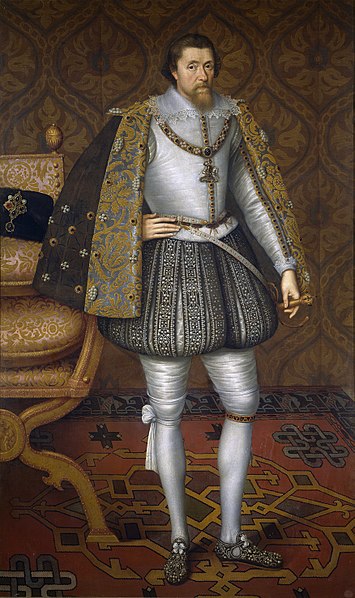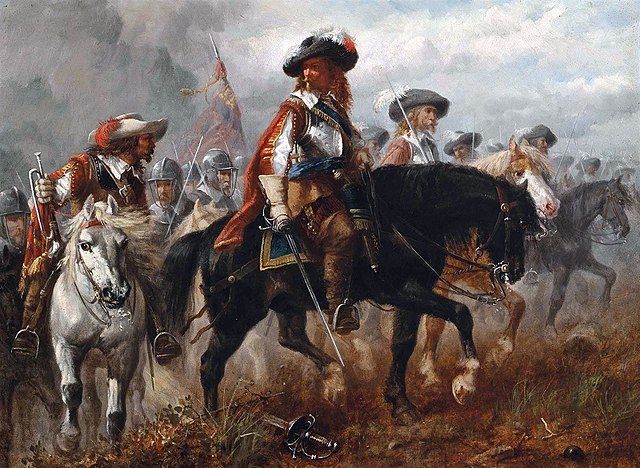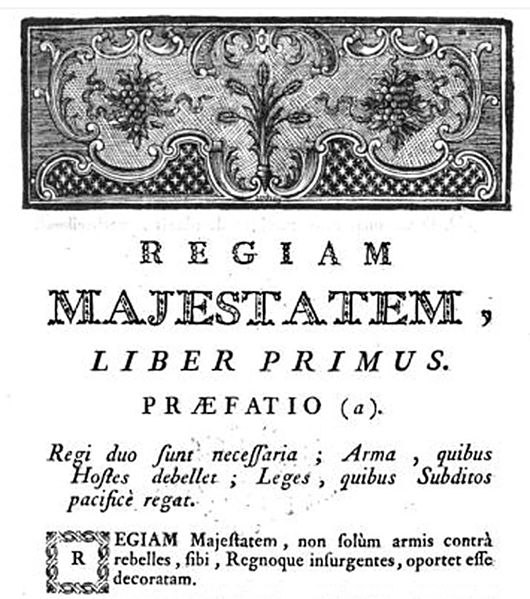Wars of the Three Kingdoms
The Wars of the Three Kingdoms, sometimes known as the British Civil Wars, were a series of intertwined conflicts fought between 1639 and 1653 in the kingdoms of England, Scotland and Ireland, then separate entities united in a personal union under Charles I. They include the 1639 to 1640 Bishops' Wars, the First and Second English Civil Wars, the Irish Confederate Wars, the Cromwellian conquest of Ireland and the Anglo-Scottish War of 1650–1652. They resulted in victory for the Parliamentarian army, the execution of Charles I, the abolition of monarchy, and founding of the Commonwealth of England, a unitary state which controlled the British Isles until the Stuart Restoration in 1660.
Monarch of the Three Kingdoms: Charles I in Three Positions by Anthony van Dyck, painted 1635–1636
The spark—riot in St Giles' Cathedral, Edinburgh, reputedly started by Jenny Geddes
King Charles I and Prince Rupert before the Battle of Naseby
The English and Scots armies lovingly embrace each other
The Kingdom of Scotland was a sovereign state in northwest Europe traditionally said to have been founded in 843. Its territories expanded and shrank, but it came to occupy the northern third of the island of Great Britain, sharing a land border to the south with the Kingdom of England. During the Middle Ages, Scotland engaged in intermittent conflict with England, most prominently the Wars of Scottish Independence, which saw the Scots assert their independence from the English. Following the annexation of the Hebrides and the Northern Isles from Norway in 1266 and 1472 respectively, and the capture of Berwick by England in 1482, the territory of the Kingdom of Scotland corresponded to that of modern-day Scotland, bounded by the North Sea to the east, the Atlantic Ocean to the north and west, and the North Channel and Irish Sea to the southwest. In 1603, James VI of Scotland became King of England, joining Scotland with England in a personal union. In 1707, during the reign of Queen Anne, the two kingdoms were united to form the Kingdom of Great Britain under the terms of the Acts of Union.

James VI, whose inheritance of the thrones of England and Ireland created a dynastic union in 1603
Coronation of Alexander III of Scotland at Scone Abbey; beside him are the Mormaers of Strathearn and Fife while his genealogy is recited by a royal poet.
The Regiam Majestatem is the oldest surviving written digest of Scots law.
Institution of the Court of Session by James V in 1532, from the Great Window in Parliament House, Edinburgh








